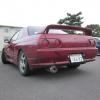Help! No Power - No Dash Lights!
Announcements
-
Similar Content
-
Latest Posts
-
By joshuaho96 · Posted
The incentives are mostly the same, yes. Ethanol is cheap compared to the cost of doing 98-100 RON with crude oil alone. 87 to 93-94 AKI all with E10. In 2020 Canada mandated E10 as a part of their "renewable fuel standard" and is supposedly going to go to E15 in 2030. In California where there are only 8 refineries with two threatening to shut down next year it's been over 20 years now of E10 and 91 AKI maximum because there's just not enough refinery capacity or crude oil supply relative to the demand for premium unleaded fuel. And CARB's low carbon fuel standard means functionally none of the diesel available at the pump is made from crude oil anymore. It's almost all entirely 20% biodiesel blended with 80% renewable diesel (hydrotreated vegetable oil) now. The number of gasoline vehicles that support E15 or higher ethanol concentrations is surprisingly low, I can't imagine it being wise to play tricks like this without flex fuel sensors in most of the fleet. -
It's almost certainly the same as the one next to it. Have a fish around amongst these hits https://www.google.com/search?q=surface+mount+transistor+m33&sca_esv=9cb49794e0b2005d&source=hp&ei=2vJ5aNjTB7Kw0PEPldnS8QM&iflsig=AOw8s4IAAAAAaHoA6qkfmF6XcygtrZ4Vu9f92NXF_RFd&ved=0ahUKEwjYqIPP7MWOAxUyGDQIHZWsND4Q4dUDCA8&uact=5&oq=surface+mount+transistor+m33&gs_lp=Egdnd3Mtd2l6IhxzdXJmYWNlIG1vdW50IHRyYW5zaXN0b3IgbTMzMgUQIRigATIFECEYoAEyBRAhGKABMgUQIRigAUjKCFAAWABwAHgAkAEAmAHfAaAB3wGqAQMyLTG4AQPIAQD4AQL4AQGYAgGgAuYBmAMAkgcDMi0xoAfMBLIHAzItMbgH5gHCBwMyLTHIBwU&sclient=gws-wiz
-
South Australia, which is hardly as far behind as the rest pf Oz makes out, and who is also not a paragon of progressiveness (read that as over-legislation) in the area of vehicle standards, has this to say on the subject: Adjustable coil-over suspension Aftermarket adjustable coil-over suspension components are suspension units that incorporate an external thread on the main body and corresponding threaded spring saddle that allows the vehicle's suspension height to be varied. If fitting aftermarket or coil-over suspension components you must submit an Application to modify a light motor vehicle form and a report from a light vehicle engineering signatory (LVES).
-
Hi all, Long time since I've posted here. Looking for some advice on what I can remove to further identify the cause of my issues. I can move the passenger seat forward and back but the knob used to adjust the seat angle is pretty much free spinning, there's very little resistance. Removing the side cover I can see that the chain is intact but the shaft for the adjustment spins without the gear attached to it moving. What's my next step for disassembly here? Is this a common fault? Just being a little cautious as I didn't want to start removing bolts for a spring to fly out or something equally as stupid. Cheers
-
By Dose Pipe Sutututu · Posted
Those above shitboxes, mediocre and above usually have a turbo strapped to them, hence the slightly higher octane is required.
-





Recommended Posts
Create an account or sign in to comment
You need to be a member in order to leave a comment
Create an account
Sign up for a new account in our community. It's easy!
Register a new accountSign in
Already have an account? Sign in here.
Sign In Now